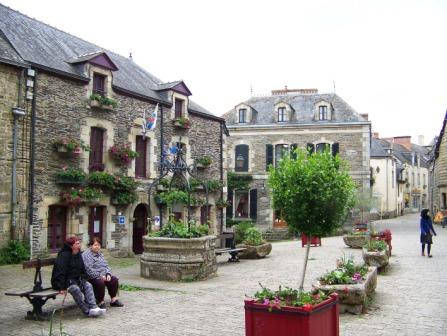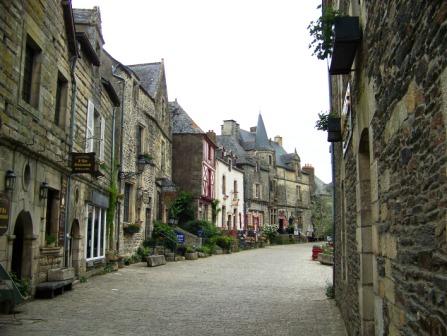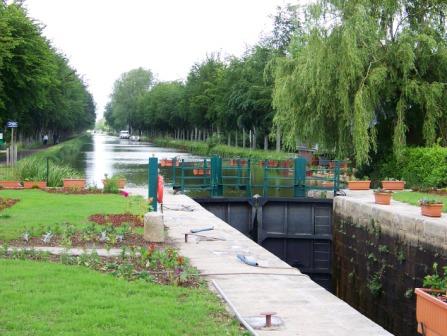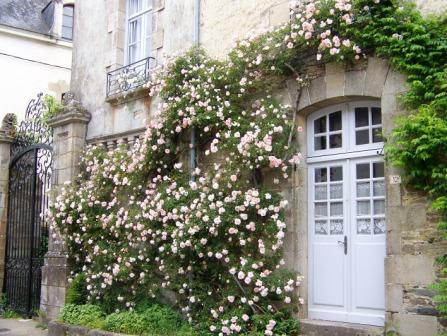Our Third
Week's House
in Questembert
with Malestroit and Rochefort-en-Terre
Our third week
was spent in the countryside near the south coast of Brittany. It wasn't a
great house,
so the photo above is the only one we took of it. It looks nice from the outside,
but the furnishings
weren't so great inside. More of a problem was its location near a pig farm.
When the wind blew
in a certain direction the smell of the pigs drifted right through the house.
So even though it
was warm we couldn't enjoy the terrace next to the house and had to keep the
windows closed.
The house was
a few miles from the town of Questembert, where a weekly farmers' market took
place under a
medieval covered market. We went to it and enjoyed wandering around the stalls
where meats, cheeses, pastries,
fruits, and vegetables were being sold, and bought some excellent smoked sausage
and a pâté of rabbit with figs.

Questembert, by
the way, is the French version of the town's original Breton name. The language
of
Brittany in the Middle Ages was Breton, a Celtic language most closely related
to Welsh. As you can
see from the signposts above, efforts are being made to keep the Breton language
alive. The town of
Questembert (Kistreberzh in Breton) means "a grove of chestnut trees."
Our favorite place name was
Pleucadeuc, as seen on the sign below (which sounds like "pluck a duck").
Notice the large outdoor
crucifix in the background of the photo below: it's another common feature
of the towns of Brittany.
Not far from Questembert
was the town of Malestroit. We stopped there briefly on the way to our
third week's house, and liked it so much we returned later in the week to
wander around some more.



The townspeople clearly take great pride in Malestroit, and lots of houses had flowers.

The town was built
along the Nantes-Brest canal. Like other canals in France, it was dug in the
nineteenth century as a more rapid form of local transportation, before the
railroads made them
obsolete. In this case, the canal also had a military purpose: it was started
under Napoleon, who
wanted a way of linking two major ports on the west coast of France without
risking the open seas
because of France's ongoing war with Britain. Nowadays the canal is used only
for pleasure boats.


Here is a flour mill along the canal, now closed.

Even closer to
our house was the village of Rochefort-en-Terre. It is really a cute place--and
it knows it, so there
were lots of souvenir shops, restaurants, and beds-and-breakfasts. We wandered
around there one afternoon.








Alongside the church, next to a vine-covered house, was this large stone crucifix.

As elsewhere, the people of Rochefort-en-Terre had decorated their houses with flowers.

Click here to see the next page, or close this page to choose your own next page from the map.
















